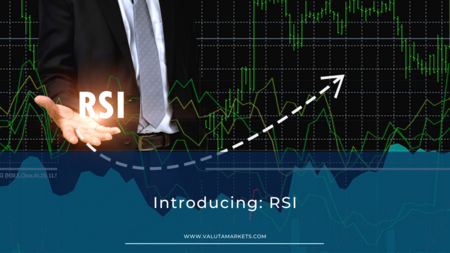The relative strength index, RSI, is a technical analysis indicator used to measure the momentum of recent price shifts to assess oversold or overbought conditions in the prices of assets such as stocks. It is displayed on a line graph moving between two extremes (oscillator) and can have readings of 0 to 100. The RSI was originally developed by J. Welles Wilder Jr., which he introduced in “New Concepts in Technical Trading Systems” in 1978.
In the traditional usage and interpretation of RSI, values of 70 or more show that a security is being overvalued or overbought, and it might get primed for a corrective pullback in price or a trend reversal. A reading of 30 or lower signifies an undervalued or undersold condition. Overall, the RSI equips technical traders with bearish and bullish price signals.
How the RSI works
An RSI is deemed overbought when it is above 70 and oversold when it falls below 30. You can adjust these traditional levels to suit the security in question better. For instance, if it reaches an overvalued level of 75, it might be prudent to adjust to 85. It is important to note that the RSI may remain oversold or overbought for longer periods amid strong trends.
Usually, RSI forms chart patterns like trend lines that may not reflect on the underlying price chart. You can find resistance or support on the RSI. The RSI usually stays in the 40 to 90 range in a bull market, where the 40-50 zone represents support. On the other hand, during a bear market, it tends to remain in the 10 to 60 range, where the 50-60 zone represents the resistance.
The above ranges vary with the strength of the underlying trend or security and the RSI settings. If the underlying prices hit a new low or high unconfirmed by the RSI, the divergence could signify a price reversal. A Top Swing Failure occurs when the RSI hits a lower high followed by a downside move below a prior low. On the other hand, a Bottom Swing Failure occurs when the RSI hits a higher low, followed by an upside move above a prior high.
Calculating the RSI
When done thoroughly, calculating the RSI demands intensive technical, complex calculations. To comprehend how to calculate fully, you should look into Wilder’s explanation, whether you are a trader or an analyst.
Whether you do or don’t, this index can be broken into a pretty simple formula:
RSI = 100 – [100 / (1 + (Average of Upward Price Change / Average of Downward Price Change)]
Importance of the Relative Strength Index
Other than evaluating oversold or overbought conditions, the RSI has other special features. Here are some other roles of this indicator.
1. Trendline Application
Interestingly, most traders might not know that the RSI and closing chart almost work hand in hand. At times, it is challenging to differentiate between the two. You apply trend lines in the closing chart, whether up or down. Similarly, you can also apply closing trend lines using the same approach in RSI.
2. Advance breakout and breakdown
This concept works very well in the OBV indicator, which still rings true in the case of the relative strength index. The advance breakout shows that RSI has surpassed the prior peak, whereas the price hasn’t breached it yet. Therefore, it is an early or advanced signal indicating that prices will tread on the heels of the indicator in future sessions.
3. Pattern Breakout
Pattern formation is an interesting element in the process of building a chart. Whether continuation or reversal, any pattern will render a breakout at a given point in time. Something else to note is that RSI regards a stock’s underlying relative strength over a given period. In RSI, such a breakout will occur about 2-3 days in advance, followed by the price.
4. Failure swing
A bullish failure swing develops when the relative strength index is oversold, that is, when it moves under 30, springs over 30, pulls back, remains over 30, and breaks past its prior high. It is essentially advancement to oversold levels and a higher lower over the oversold levels.
5. Role of 50
In RSI, the middle 50 line is a crucial line that helps indicate the price direction. During the bullish phase, the price is typically observed to remain above the mid-50 line. In a market’s bearish phase, it faces very strong resistance from this mid-line.
Conclusion
As an indicator, the RSI is naturally rangebound, which means you’ll get better results by applying it to a rangebound price environment. Signals that align with the trend within trading environments are more reliable. On the other hand, those against the trend are better for trade exits than entries. Although the stochastic may be similar in application to the relative strength index, the mathematical formulas are different.

